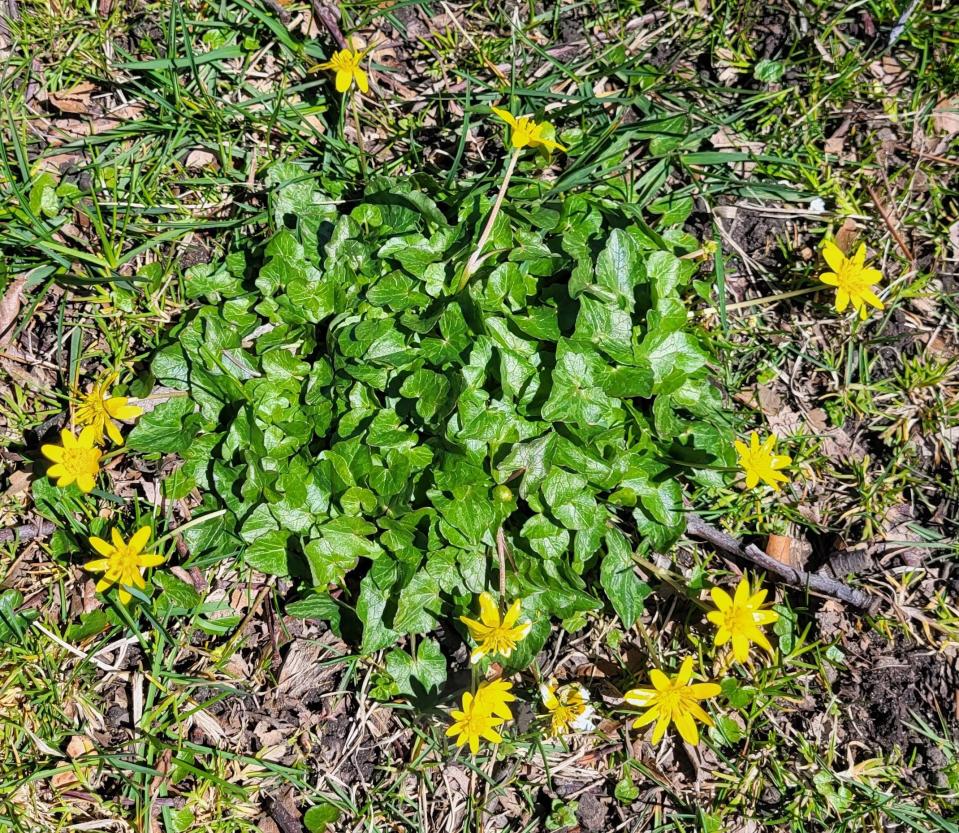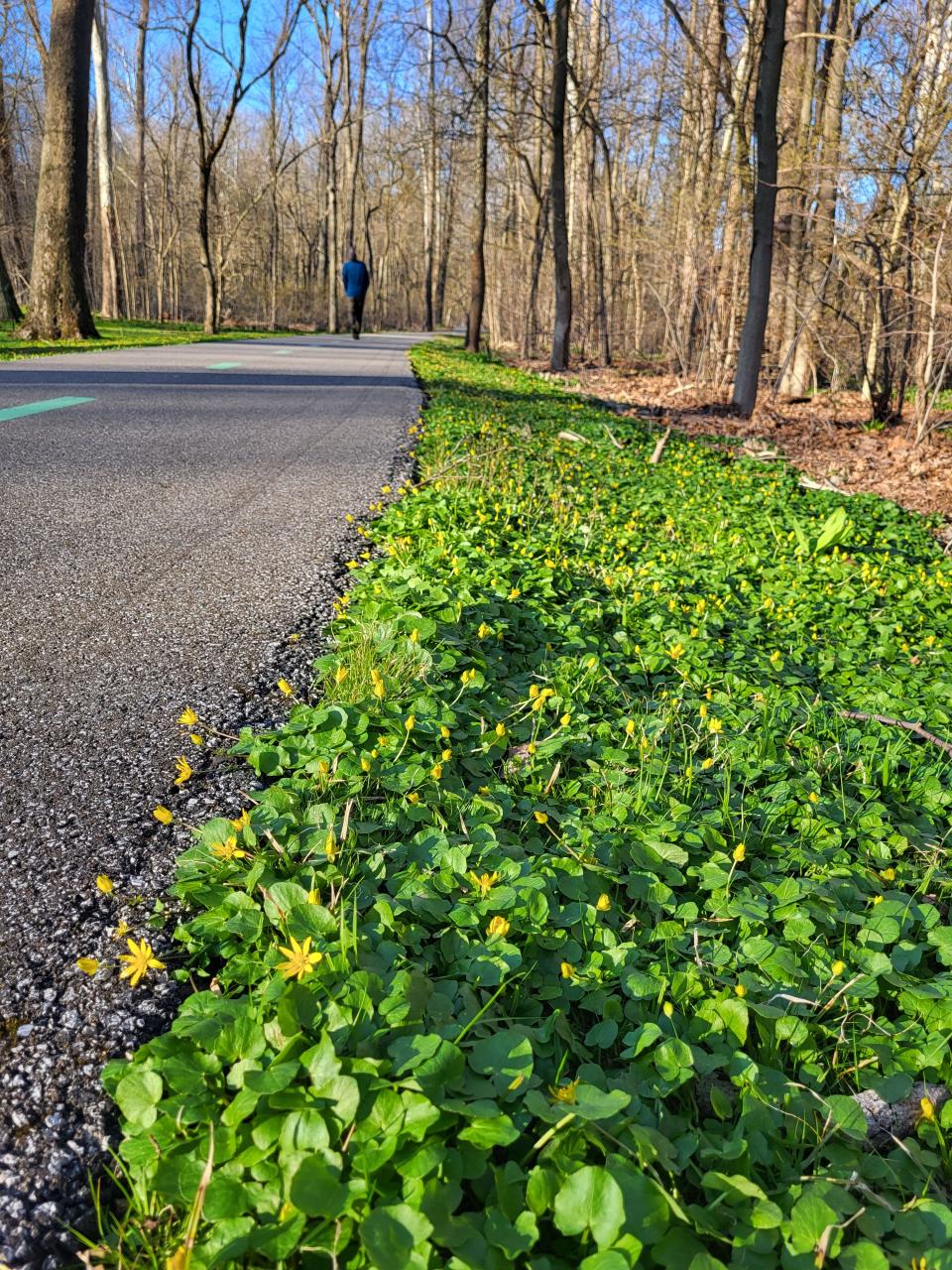Lesser celandine added to Michigan's invasive species watch list: What to know
Underneath a mask of bright yellow blossoms and heart-shaped leaves, an invasive species is threatening native mid-Michigan flora.
During an annual review of Michigan's invasive species watch list, a new species, lesser celandine (Ficaria verna), was added to the list for its tendency to spread uncontrollably and push native plants out of their habitats.
Lesser celandine is a non-native, low-growing perennial plant in the buttercup family, most commonly found near streams and forested floodplains, that was first brought to Michigan as a spring interest species for gardens.

Lesser celandine's heart-shaped leaves and glossy yellow flowers might look harmless, but the plant has the threatening potential to spread by seeds, tubers (underground stems) and bulbils (tiny bulblike structures where the leaf meets the stem). With three methods of reproduction, lesser celandine can spread very rapidly in areas with disturbed soils, crowding out native species like spring beauties and trilliums.
Additionally, the plant's short life span − quickly sprouting in early spring, flowering, going to seed and then dying before summer even rolls around − it's a particularly difficult invasive species to control.

Lesser celandine has recently been identified in some areas of the Grand River watershed, the Michigan Invasive Species Program said, but may be elsewhere in Michigan as well.
The Michigan Invasive Species Program asks that people report sightings of lesser celandine, which can be confused with Michigan's native marsh-marigold, to the Midwest Invasive Species Information Network or on the free MISIN app.
"With the prioritization afforded by the watch list, we're hoping reports by partners and the public can help us understand how far the invasion extends so we can make the best decisions about how to steward our resources – both financial and natural," said Katie Grzesiak, terrestrial invasive species coordinator with the Michigan Department of Natural Resources.
For more information on identifying and preventing the spread of lesser celandine, visit the Michigan Invasive Species Program.
More: Invasive phragmites 'quickly invading' Belle Isle
Other updates to Michigan's invasive species list
The common names of five invasive species are being changed to better reflect their appearances instead of place-based or potentially derogatory terms that were used before.
"Each known plant and animal species has a single scientific name, usually in Latin, which is used as its primary identifier. Common names are the nicknames we give to species,” said Grzesiak. “Sometimes they are descriptive of the plant, and other times they might relate to a species’ perceived origin or qualities.”
The five species are being renamed as followed, according to the Michigan Invasive Species Program:
Calligraphy sedge will replace Asiatic sand sedge as the common name for Carex kobomugi, a species not known to be present in Michigan.
Chaff flower will be used instead of Japanese chaff flower to refer to Achyranthese japonica, an invasive floodplain plant not known to be present in Michigan.
Cinnamon vine will be used as the common name for Discorea polystachya. Formerly referred to as Chinese yam, this fast-growing vine with potatolike tubers is found in several locations in Michigan.
Purple jewelweed will be used in place of Himalayan balsam as the common name for Impatiens glandulifera, an invasive flowering plant found in areas of the Upper Peninsula.
Stiltgrass will replace Japanese stiltgrass as the common name for Microstegium vimineum, an invasive annual grass found in some areas of southern Michigan.
Prior common names will remain on State of Michigan websites for the foreseeable future as references to help with the transition, while species' scientific names will remain unchanged.
View the whole invasive species watch list here.
This article originally appeared on Detroit Free Press: What to know about new invasive species in Michigan

